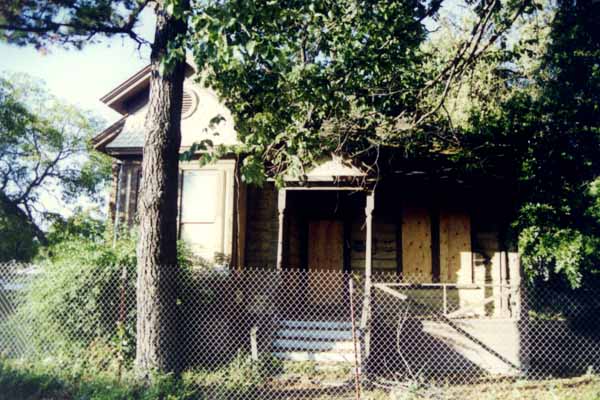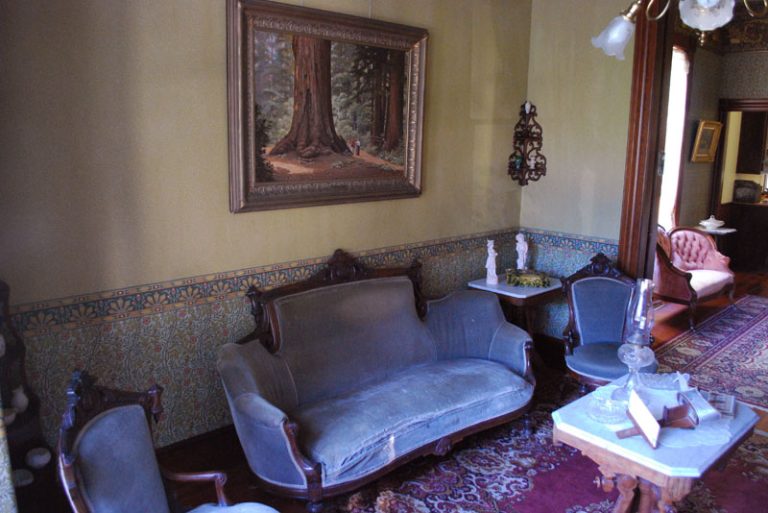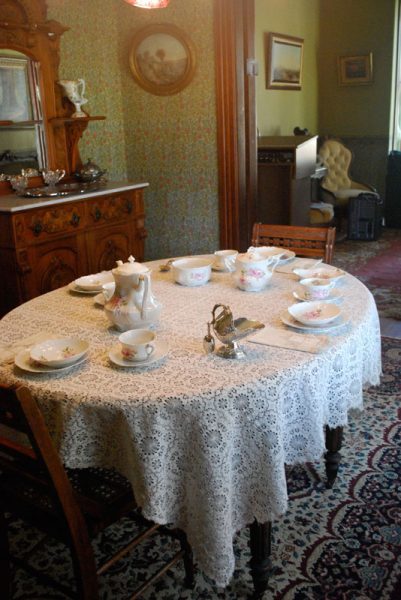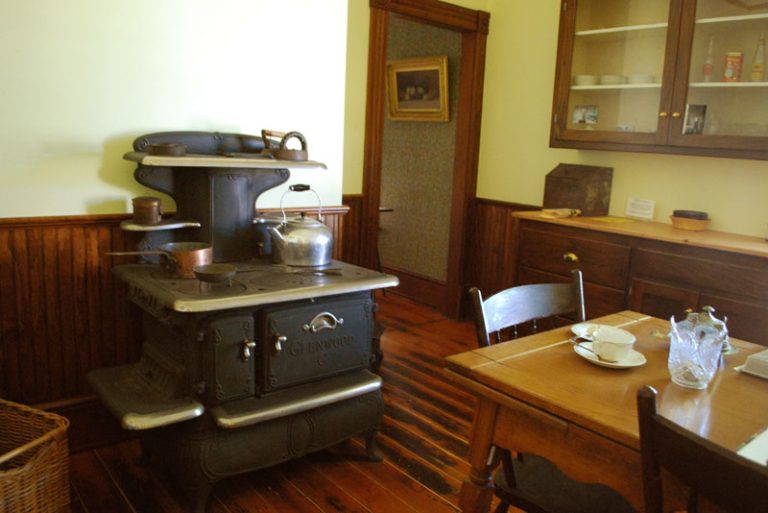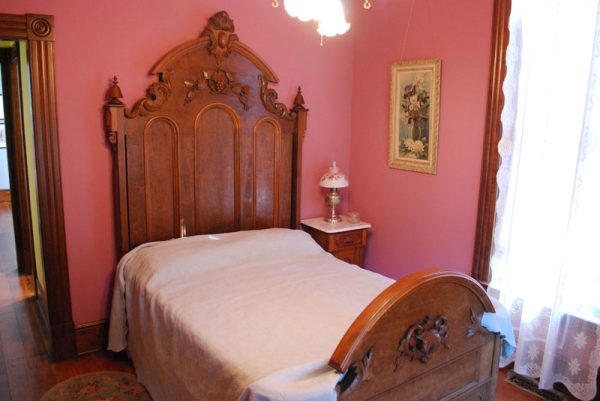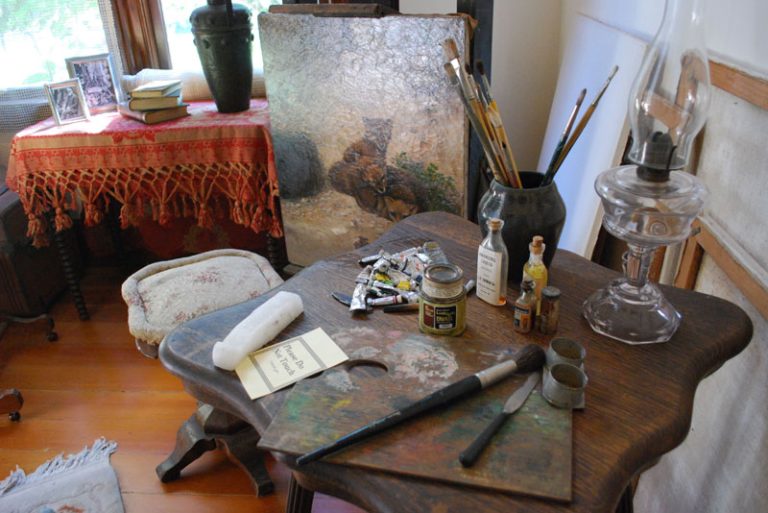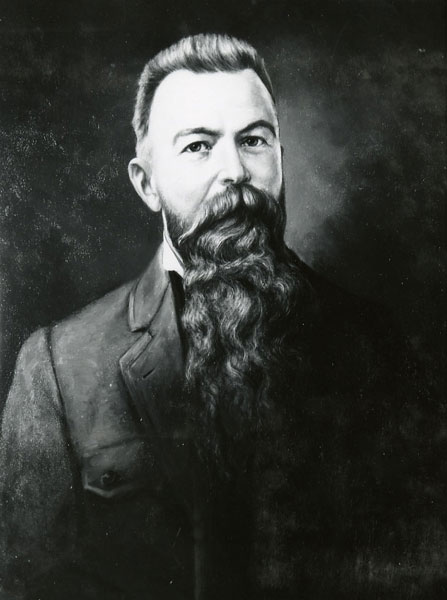 He
saved the Redwoods
He
saved the Redwoods
As told by Leonard McKay, who provided information for “Good
& Ancient Forest”, the story of Andrew P. Hill by Carolyn De
Vries.
Have you ever been in Big Basin Park and stood under a giant
redwood, the tallest living tree, and wondered how and why they are
still here? Let me tell you the story of the man who saved the
redwoods.
Twenty-three years ago, Carolyn De Vries, a friend who was a
graduate history student came to me asking for a suggestion as to
whom to write about for her master’s thesis. Without hesitation I
suggested the name of a man who I felt has not been properly
recognized. This led to the publication of her excellent book, “Grand
and Ancient Forest.”
A school has been named for him, one of his paintings hang in the
City Council Chambers, another major painting hung in the Assembly
Chambers of the State Capitol Building in Sacramento and yet none of
his work is displayed in any of the San Jose art galleries!
Last year, a man came into our shop and without saying a word
opened his brief case and laid out $10,000 in nice, new, crisp $100
bills and advised me that he wanted my painting of the redwoods for
sale at Memorabilia. I asked him what he was going to do with it and
he said he had a buyer on the East Coast. I told him that if the
painting was to leave San Jose, it was not for sale at any price! The
artist who did this painting was Andrew Putnam Hill.
When Hill was 14 years old, he came overland to California in
1867, just before the transcontinental railway was built. His father,
Elijah, had made the journey just before Andrew was born, but before
he reached the golden land, Elijah and a companion were attacked by
Indians, and while Elijah survived the fight he died a week later of
exposure and exhaustion. Andrew came West later with his uncle and
after arrival he attended the small College of Santa Clara, first as
a high school student and then as a college freshman. Although a
Protestant, Andrew made many Catholic friends at Santa Clara who were
to greatly assist him in later years. When his funds ran out, he left
to work to support himself, first as a draftsman and later, after
attending the California School of Design, a painter of portraits.
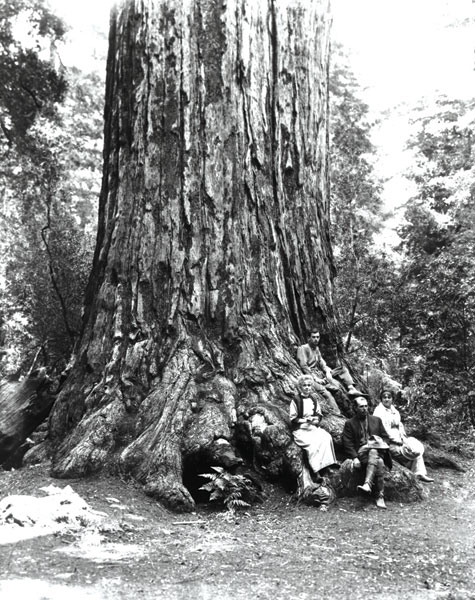 Perfecting
his natural artistic talent, he opened a portrait studio in San Jose
with a succession of partners. Although an accomplished artist, he
was a poor businessman plagued by bad luck. In order to supplement
his income and to feed his growing family, he took up photography as
painting was in an economic decline.
Perfecting
his natural artistic talent, he opened a portrait studio in San Jose
with a succession of partners. Although an accomplished artist, he
was a poor businessman plagued by bad luck. In order to supplement
his income and to feed his growing family, he took up photography as
painting was in an economic decline.
In 1899, a major fire erupted in the redwood forest near the
summit of the Santa Cruz Mountains above Los Gatos. Hill photographed
the burning trees for a London newspaper where the editors marveled
at the size of these trees. They commissioned Hill for more pictures
of just the redwoods. These trees are the Sequoia Sempervirens, the
tallest trees in the world, with a life span of over 2000 years. Oh,
yes, someone is going to correct me and say that the Sequoia Gigantia
are bigger. Yes, they contain more board feet of timber, but the
Sempervirens are the tallest.
On assignment, Hill took his bulky camera to the Santa Cruz grove,
which we know today as Big Trees Grove near Felton. The grove was
then in private ownership and Hill shot many pictures of the trees
when the owner, Joseph Welch, confronted him for unauthorized
photography and demanded the glass negatives. Hill, a big man,
refused and strong words were exchanged. The episode so enraged Hill
that he determined to do something about saving the redwoods, as he
saw that almost all of the virgin trees had been cut for lumber.
Infuriated, he started his crusade to save the redwoods. It was
suggested that the trees in Big Basin were larger and more important
than the Big Trees Grove, so in 1900 an investigative party of
leading and concerned citizens explored Big Basin. They were so
impressed that they vowed to save these trees.
A long hard battle ensued; Hill had help from many quarters; the
President Jordan and faculty members of Stanford University, Santa
Clara College’s President, Father Kenna, S.J., James Phelan, who
was mayor of San Francisco, and later, State Senator, and most
particularly, Carrie Stevens Walter. She became the first secretary
of the Sempervirens Society, and participated in all of the battles.
Had the trees not been saved at that very time, it was estimated that
in six months there would not be any virgin trees remaining in that
whole area.
Hill’s campaign led him to the State legislature in Sacramento
and, after many months of negotiation, it came to a final vote. The
preliminary indications were that the State would not approve the
expenditure of $250,000. Hill received a guarantee of $50,000 from
Fr. Kenna’s nephew, James Phelan; this was to be a guarantee to the
lumber companies owners, forfeitable if the State did not purchase
the property. At midnight, just before the vote was to be taken, Hill
walked three miles from Santa Clara, as the street cars had already
stopped for the night, to the Herald newspaper offices in San Jose,
where the editor, Harry Wells, had a special edition published. Hill
waited for the papers to be printed and boarded the 4:30 a.m. train
for Sacramento with the papers under his arm. A copy was placed on
each legislator’s desk. The bill passed unanimously and, thus,
California got its first State park, California Redwood Park. Private
citizens matched the State’s $250,000. Today, it is known as Big
Basin Redwoods State Park.
Hill’s paintings may be seen at the Orradre Library of the
University of Santa Clara, at Andrew Hill High School, in the City
Council Chambers, at the Historic Museum, but rarely in any San Jose
art galleries. The painting of giant redwoods on the wall of
Memorabilia was painted for the 1915 Panama Pacific Exposition in San
Francisco. As a tribute to the woman and poetess who worked so
tirelessly beside him, he painted her into the right foreground,
although Carrie Stevens Walter had died eight years earlier.
When Hill died in 1922, he left his family an estate valued at
less than $900. However, he left all of us a legacy that is
immeasurable, the wonderful giant redwoods that were born before
Christ.
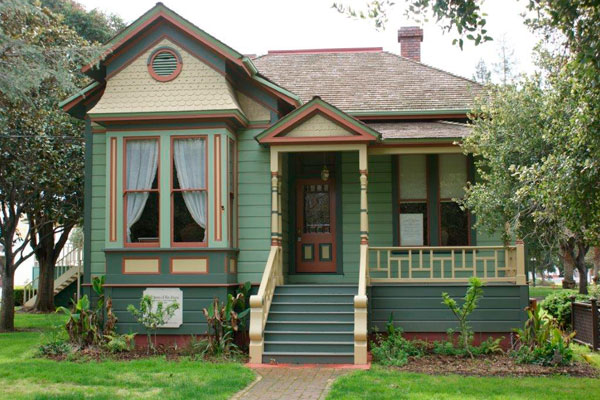 In
1995, the Victorian Preservation Association (VPA) learned that the
home of Andrew P. Hill, an early and important San Jose photographer
and painter, was under threat of being demolished. This San Jose City
Historic Landmark building was formerly located at 1350 Sherman St.
As part of its preservation mission, the VPA bought the house for $1,
and it was moved to the San Jose History Park where the VPA has
restored it.
In
1995, the Victorian Preservation Association (VPA) learned that the
home of Andrew P. Hill, an early and important San Jose photographer
and painter, was under threat of being demolished. This San Jose City
Historic Landmark building was formerly located at 1350 Sherman St.
As part of its preservation mission, the VPA bought the house for $1,
and it was moved to the San Jose History Park where the VPA has
restored it.

